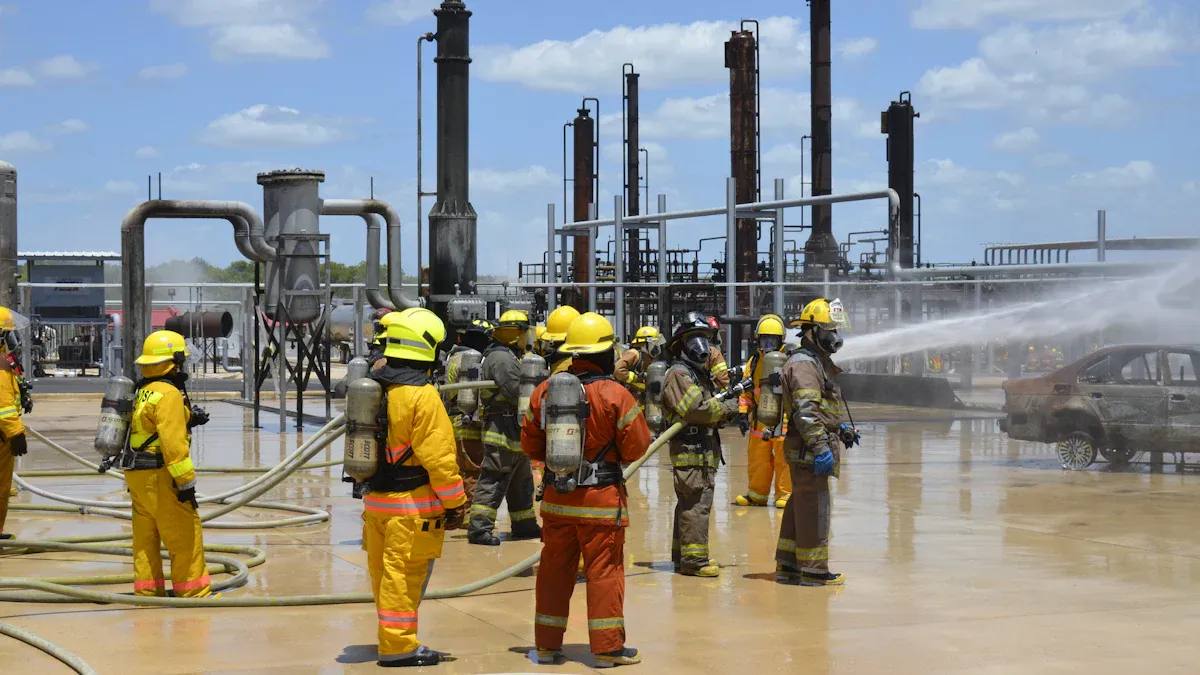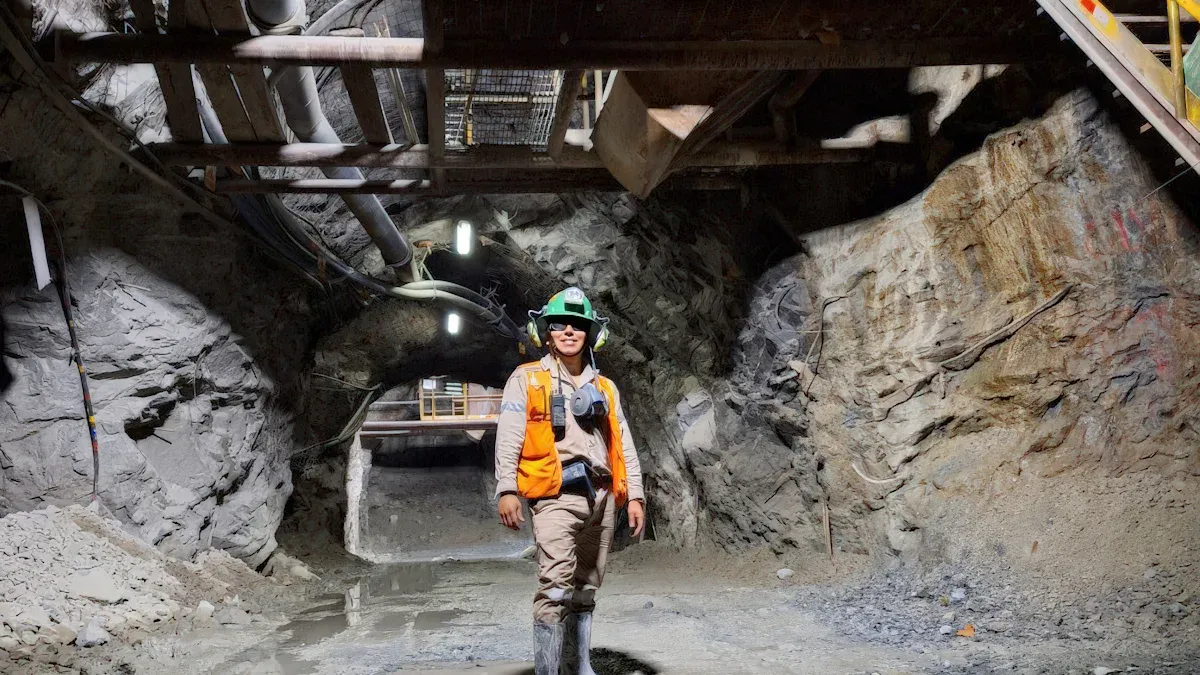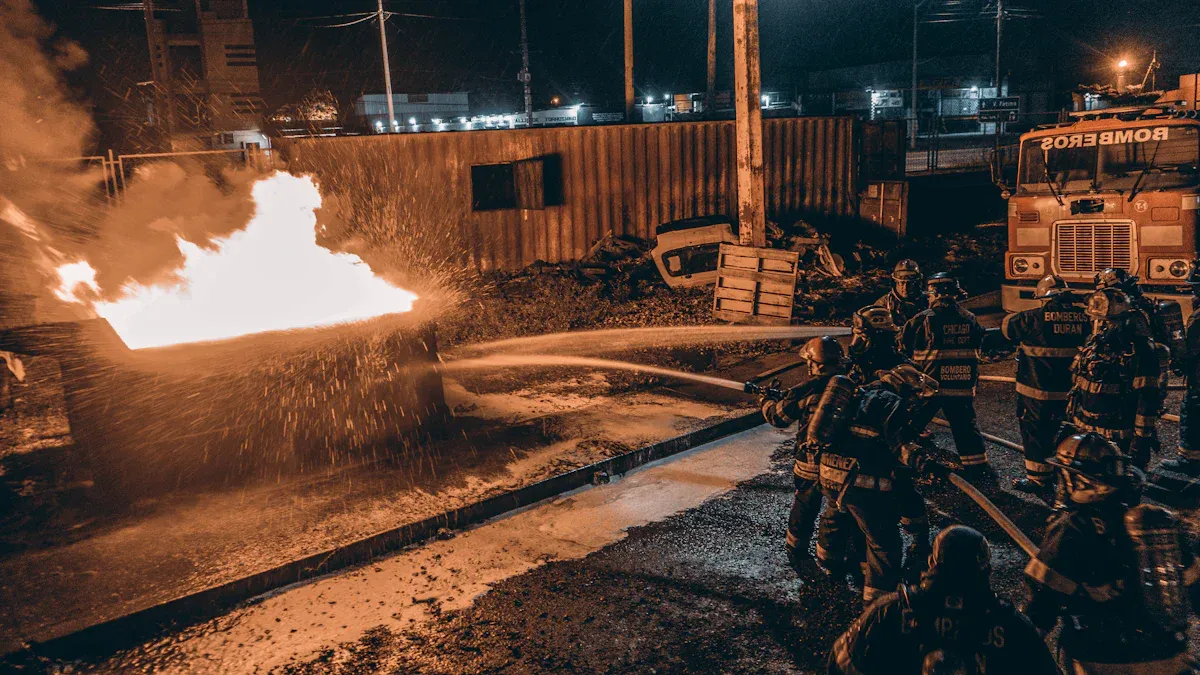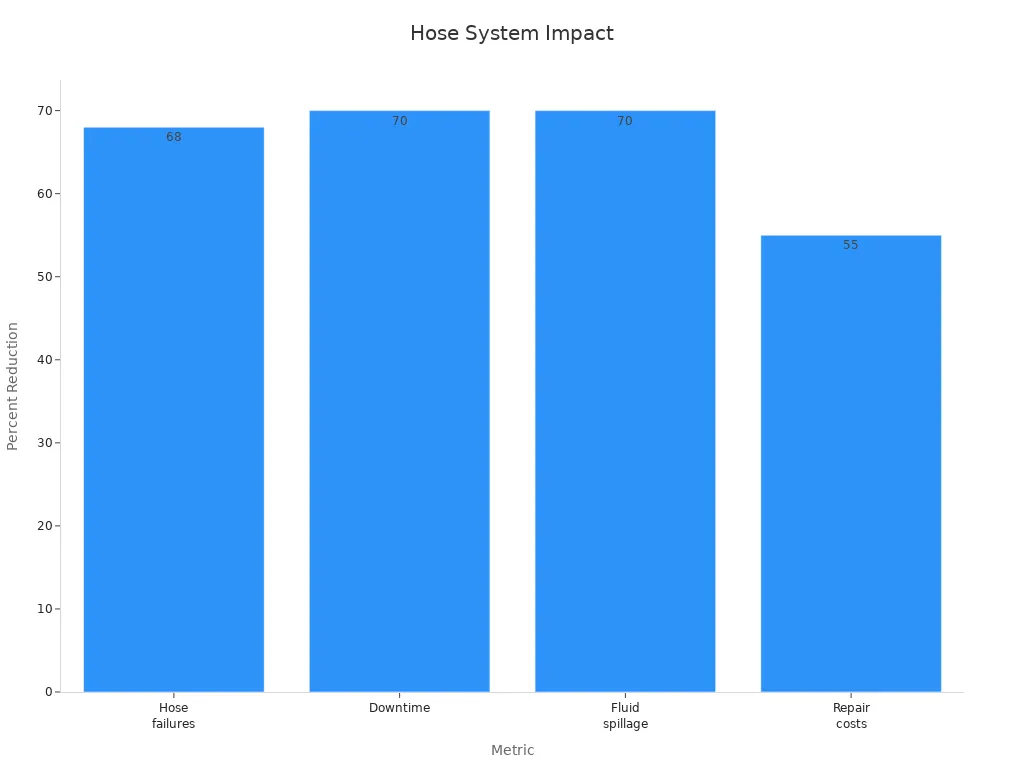
Heavy-duty hose couplings help mining crews control leaks and reduce fire hazards. Operators rely on each hose coupling to connect with a branchpipe nozzle, fire nozzle, or foam nozzle. These connections ensure water and hydraulic fluids move safely, protecting equipment and workers from dangerous fires.
Key Takeaways
- Heavy-duty hose couplings prevent leaks and reduce fire risks by using strong materials, tight seals, and secure locking systems designed for tough mining conditions.
- Regular inspection and maintenance of hose couplings help detect wear and leaks early, lowering the chance of fires and extending equipment life.
- Following best practices for selecting, installing, and maintaining hose couplings improves safety, reduces downtime, and saves costs in mining operations.
Hose Coupling Fire Risks and Prevention in Mining

Common Mining Fire Hazards and Hose Coupling Failures
Mining sites face many fire hazards every day. Heavy machinery, electrical systems, and flammable materials create a risky environment. When a hose coupling fails, it can leak fluids like oil or hydraulic fluid. These leaks often happen near engines or hot surfaces. If the fluid touches a hot part, it can catch fire quickly. Workers must watch for signs of wear, such as cracks or loose fittings. Regular checks help prevent sudden failures. Proper training ensures that crews know how to spot and fix problems before they lead to fires.
Hydraulic Systems, Hose Coupling Leaks, and Fire Sources
Hydraulic systems power many mining machines. These systems use hoses and hose couplings to move oil under high pressure. When a hose coupling leaks, oil can spray onto hot engine parts. This creates a serious fire risk.
Safety Tip: Always inspect hoses and couplings near heat sources before each shift.
Some real-world incidents highlight the danger:
- Hydraulic hose failures, such as chafing or ruptures near engines, have caused oil leaks that ignite on hot surfaces.
- In one underground mine, repeated small leaks on a haul truck sprayed oil onto hot exhausts. This caused a fire, but workers put it out before it spread.
- After this event, the mine switched to fire-resistant hoses and added leak detection sensors. These changes stopped further leaks and fires.
- Research shows that fluid power failures cause over 10% of mine safety incidents. Damaged hoses are a leading reason oil contacts hot equipment and starts fires.
- Using fire-resistant hoses, early leak alarms, and strict maintenance has greatly reduced fire incidents in mining.
How Heavy-Duty Hose Coupling Design Prevents Fire Hazards
Heavy-duty hose couplings use strong materials and tight seals. These features stop leaks, even under high pressure. Many couplings have locking mechanisms that keep them secure during machine operation. Fire-resistant coatings add another layer of safety.
Note: Choosing the right hose coupling for each job helps prevent leaks and reduces fire risks.
Manufacturers test hose couplings to meet strict safety standards. They design them to handle rough mining conditions. When mines use high-quality couplings and follow maintenance schedules, they lower the chance of fire. Good design and regular care work together to keep workers and equipment safe.
Hose Coupling Features, Standards, and Best Practices

Fire-Resistant Materials and Hose Coupling Durability
Mining environments demand hose couplings that withstand extreme heat, abrasion, and pressure. Manufacturers use fire-resistant materials such as silicone-coated fiberglass and reinforced steel braids to protect hoses and couplings from burns and mechanical damage. These materials prevent abrasion and fraying, which helps keep the hose coupling secure and leak-free. Fire jackets, made from fiberglass coated with silicone rubber, add another layer of protection for both equipment and personnel.
Durability also depends on the construction of the hose and coupling. Reinforcement layers, like woven stainless steel braids, improve flexibility and help the system handle high pressure. The bonding between layers prevents delamination and failure. Features such as bend restrictors and minimum bend radius guidelines stop hoses from kinking or breaking during use. Fire-resistant polymers and additives in hose covers extend the life of the hose coupling by resisting heat, UV light, and ozone. These design choices ensure that mining operations can rely on their hose couplings for safety and long service life.
Regulatory Compliance for Mining Hose Coupling Safety
Mining companies must follow strict safety regulations for hose coupling systems. Regulatory compliance starts with accurate measurement and selection of components. Companies like Yuyao World Fire Fighting Equipment Factory provide products that meet industry standards, helping mines avoid legal issues and maintain safe operations.
Key compliance measures include:
- Using Standard Operating Procedures (SOPs) for consistent measurement and installation.
- Keeping detailed checklists and documentation for every hose coupling.
- Training workers to follow review processes and safety protocols.
- Scheduling regular calibration and checks of measurement tools.
- Tracking errors and performing visual inspections to catch problems early.
These steps help mines meet safety standards and reduce the risk of accidents. Proper documentation and routine checks support regulatory adherence and keep workers safe.
Best Practices for Hose Coupling Selection and Installation
Selecting the right hose coupling involves more than just matching sizes. Mines must consider system pressure, temperature, fluid type, and environmental conditions. Material compatibility between fittings, seals, and hydraulic fluids prevents failures. Using the correct size and type of fitting—such as JIC, ORFS, NPT, or BSP—ensures a secure connection.
Installation best practices include:
- Cleaning all components before assembly.
- Lubricating O-rings and threads with fluids that match the system.
- Using calibrated torque wrenches to apply the correct force.
- Hand-starting threads to avoid cross-threading.
- Routing hoses to prevent kinks, sharp bends, and abrasion.
Case studies show that these steps can increase the time between failures by 25% and reduce warranty claims by 30%. Mines that use advanced rubber compounds and control vulcanization processes see fewer leaks and longer hose life. Preventive maintenance, such as scheduled inspections and hose replacement, keeps systems reliable. Grounding and bonding for electrostatic safety, along with using conductive hoses, further reduce risks.
Yuyao World Fire Fighting Equipment Factory offers a range of hose couplings designed for mining applications. Their products support these best practices, helping mines achieve safer and more reliable operations.
Inspection, Maintenance, and Real-World Safety Outcomes
Routine inspection and maintenance play a critical role in mining fire safety. Mines should schedule regular checks using thermal imaging, vibration analysis, and visual inspections. Replacing hoses and couplings based on manufacturer recommendations prevents unexpected failures.
Real-world examples highlight the impact of these practices. Mines that follow strict inspection routines report a 40-60% reduction in leakage rates and a 30-50% extension in service life. Pressure resistance and chemical degradation resistance also improve by up to 40% and 50%, respectively. Most hose failures result from abrasion, so using abrasion sleeves, steel spring guards, and abrasion-resistant covers is essential.
Premade hoses for high-pressure lines reduce assembly errors and warranty issues. Mines that use standardized hose coupling thread ends and on-site crimping capabilities experience less downtime and greater reliability. By following these maintenance and inspection practices, mining operations create safer environments for workers and equipment.
Heavy-duty hose coupling systems form the backbone of mining fire safety. Mines that invest in high-quality hose couplings see fewer failures, less downtime, and lower repair costs. The table below shows the positive impact on safety and operations:
| Metric | Improvement/Reduction | Impact on Fire Risk and Mining Safety |
|---|---|---|
| Hose failures | 68% reduction | Fewer hydraulic hose failures reduce fluid leaks, lowering fire risk. |
| Downtime | 70% reduction | Less operational stoppage improves safety and response times. |
| Fluid spillage | 70% reduction | Reduced hydraulic fluid leaks decrease fire hazards and environmental risks. |
| Repair costs | ~55% reduction | Cost savings enable reinvestment in safety and maintenance. |
| Annual savings | $140,000 | Financial benefit supports sustained safety improvements. |
| Return on Investment (ROI) | Achieved in 14 months | Quick ROI demonstrates effectiveness of high-quality hose systems. |

Mining operations should always prioritize reliable hose coupling systems to protect workers and equipment.
FAQ
What makes a hose coupling “heavy-duty” for mining?
Heavy-duty hose couplings use reinforced materials and secure locking systems. These features help them withstand high pressure, extreme temperatures, and rough handling in mining environments.
How often should mining crews inspect hose couplings?
Crews should inspect hose couplings before each shift.
Regular checks help spot leaks, cracks, or loose fittings early, reducing fire risks.
Can fire-resistant hose couplings prevent all mining fires?
Fire-resistant hose couplings lower fire risks.
- They cannot stop every fire.
- Mines must also follow safety protocols and perform routine maintenance.
Post time: Jul-07-2025

